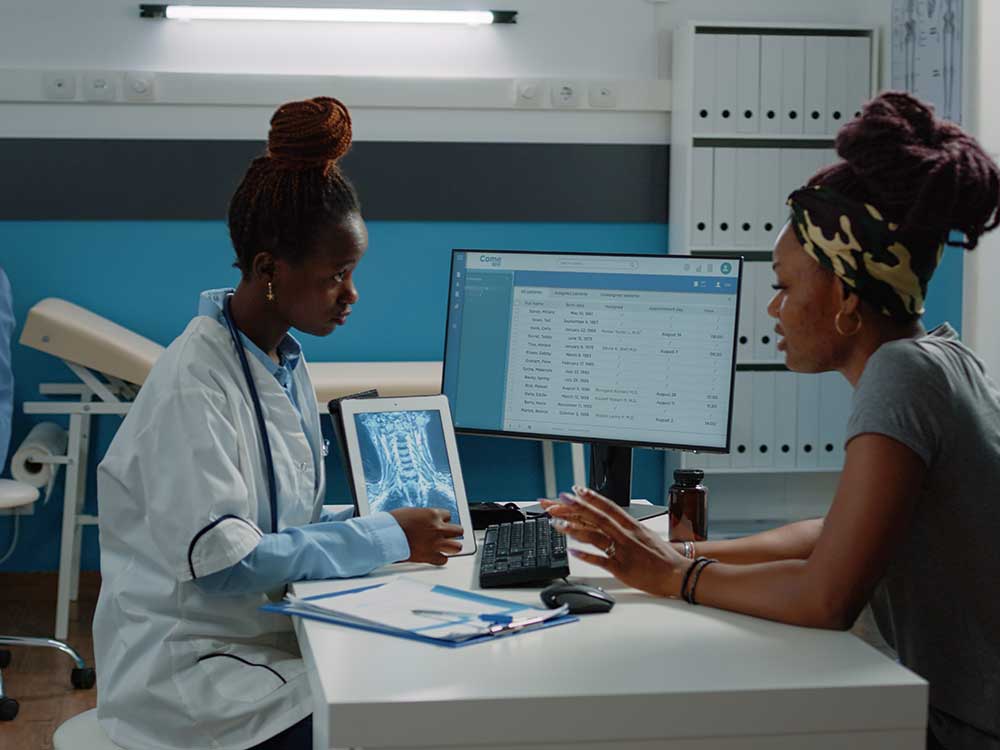Finest Practices in Medical Management for Improving Effectiveness and Reducing Prices
In the ever-evolving landscape of healthcare, the search of best methods in clinical administration is vital for enhancing performance and curbing costs. By incorporating advanced innovations such as digital wellness records and telemedicine, medical care suppliers can streamline operations and enhance person care.
Leveraging Advanced Innovation
The assimilation of electronic services into healthcare systems has actually changed the method facilities run, simplifying procedures and boosting person care. By centralizing person info, EHRs get rid of the need for cumbersome paperwork and promote seamless communication amongst health care suppliers.
Telemedicine is one more technological advancement that has actually transformed patient communication. It provides ease for both individuals and healthcare specialists by enabling remote assessments, which can reduce the requirement for in-person gos to and maximize visit organizing. In addition, telehealth systems can extend health care accessibility to rural or underserved locations, connecting gaps in care distribution.
Furthermore, using Expert system (AI) and artificial intelligence is coming to be progressively widespread in predictive analytics, permitting early detection of possible health problems and even more educated decision-making. These modern technologies, when integrated successfully, can boost diagnostic accuracy and individualize patient treatment strategies, inevitably resulting in boosted healthcare results and functional performance.
Optimizing Resource Allowance
By purposefully handling resources such as workers, tools, and financial resources, health care facilities can considerably improve their operational efficiency, boost individual end results, and lower unneeded expenses. The very first step in optimizing source appropriation entails performing a thorough analysis of present assets and recognizing locations where resources might be underutilized or exhausted.
Prioritizing resource appropriation based upon client demands and solution demands is essential. This entails lining up resources with high-demand locations, such as emergency treatment or specialized treatments, to guarantee prompt and reliable client treatment. Carrying out flexible staffing versions can also enhance labor resources by readjusting workers appropriation in action to fluctuating person volumes. In addition, embracing telemedicine and various other technical remedies can minimize physical source restrictions by supplying different methods for patient-provider interactions.
Financial resources must be diligently kept track of and designated with strategic foresight to support both temporary functional needs and long-lasting institutional objectives. This consists of investing in training programs that boost staff competencies and embracing energy-efficient methods that lower functional costs (medical administration). Ultimately, an enhanced resource allowance approach cultivates a sustainable health care setting that is receptive, reliable, and monetarily sensible
Streamlining Workflow Processes
When healthcare centers objective to enhance functional effectiveness, improving process processes comes to be a pivotal focus. Reliable operations decrease redundancy, eliminate unnecessary steps, and boost control amongst medical care specialists. This technique not only speeds up service distribution however likewise improves the high quality of client care.

Following, technology assimilation plays a significant function in streamlining process. Executing digital health and wellness documents (EHRs) and computerized doctor order access (CPOE) systems reduces documents, decreases human error, and guarantees details is available to all appropriate employees. Additionally, leveraging telemedicine platforms can enhance person assessments and follow-ups, minimizing the strain on physical facilities.

Ultimately, streamlined workflows lead to cost reductions and boosted person complete satisfaction, promoting a much more lasting healthcare environment.
Enhancing Information Administration
Building upon streamlined operations, maximizing data monitoring comes to be a crucial element beforehand health care administration. Efficient data monitoring systems are vital for preserving precise patient documents, boosting decision-making, and making sure compliance with regulative requirements. By implementing click to read durable information management solutions, medical care facilities can enhance the high quality of individual care while at the same time reducing functional expenses.
One secret aspect of boosting data management is the assimilation of sophisticated electronic health and wellness document (EHR) systems. These systems help with the seamless exchange of person info throughout different divisions, minimizing duplication of examinations and reducing mistakes. A well-designed EHR system sustains data analytics, making it possible for doctor to identify trends and make educated decisions pertaining to client treatment.
Furthermore, guarding client information is paramount. Taking on extensive cybersecurity actions, including file encryption and normal audits, guarantees the honesty and confidentiality of sensitive details. This not only secures patients however likewise keeps the institution's track record.
Investing in staff training is one more essential factor. Educating health care specialists on information management methods improves their capacity to properly utilize modern technology, leading to improved client results. Finally, boosting information monitoring through advanced technology and detailed training is crucial for attaining performance and cost decrease in clinical management.
Fostering Collaborative Interaction
A critical component ahead of time medical management is promoting joint interaction amongst health care experts. Efficient interaction is critical for guaranteeing smooth patient treatment, maximizing therapy results, and reducing errors. By motivating open dialogue and control throughout multidisciplinary groups, healthcare organizations can improve their functional performance and lower unneeded expenses.
Central to this method is the integration of interaction modern technologies such as electronic health documents (EHRs) and safe and secure messaging systems, which assist in the rapid exchange of critical person details. These devices enable healthcare suppliers to accessibility and share data in genuine time, making sure that all staff member are notified and aligned in their decision-making procedures. Routine team conferences and interdisciplinary rounds can further promote a culture of partnership and accountability.
Educating programs focused on improving communication skills are additionally vital. These programs can aid team develop the capacity to convey info plainly and listen proactively, hence reducing misunderstandings and cultivating a helpful job environment. On top of that, taking on standardized interaction protocols, such as SBAR (Situation, History, Analysis, Recommendation), can enhance the exchange of details, guaranteeing that essential details are shared succinctly and effectively. Ultimately, promoting joint interaction results in enhanced medical care distribution and expense financial savings (medical administration).

Conclusion
Incorporating advanced innovation, such as digital wellness documents and telemedicine, along with maximized source allowance and structured process processes, is important for improving effectiveness in medical administration. Effective information monitoring and cultivating collective navigate to this site communication among healthcare groups are crucial for minimizing redundancies and improving treatment high quality. By prioritizing preventive care and involving in top quality enhancement initiatives, healthcare organizations can achieve significant price savings and boosted person end results, therefore ensuring lasting medical care shipment in an increasingly intricate atmosphere.